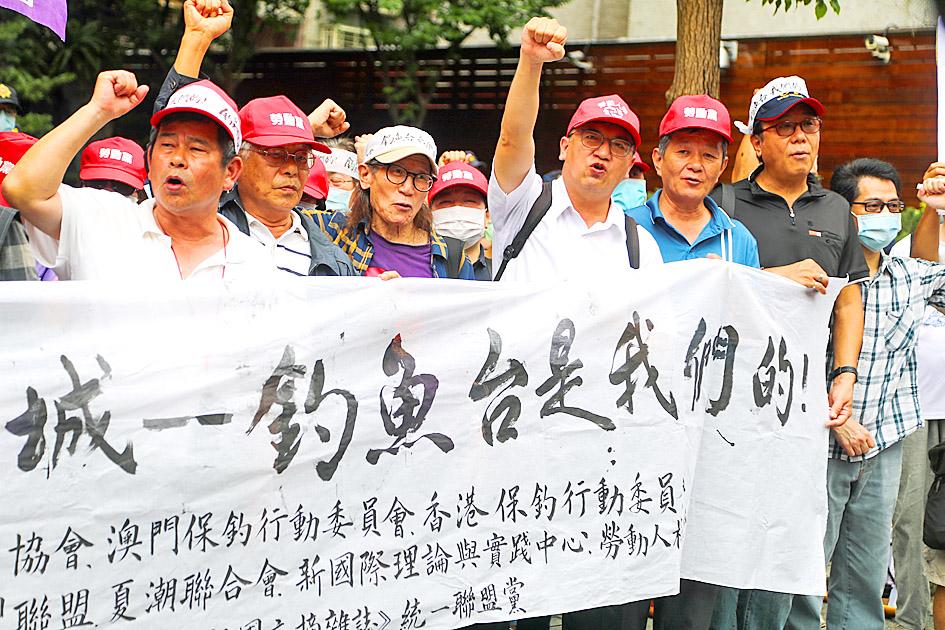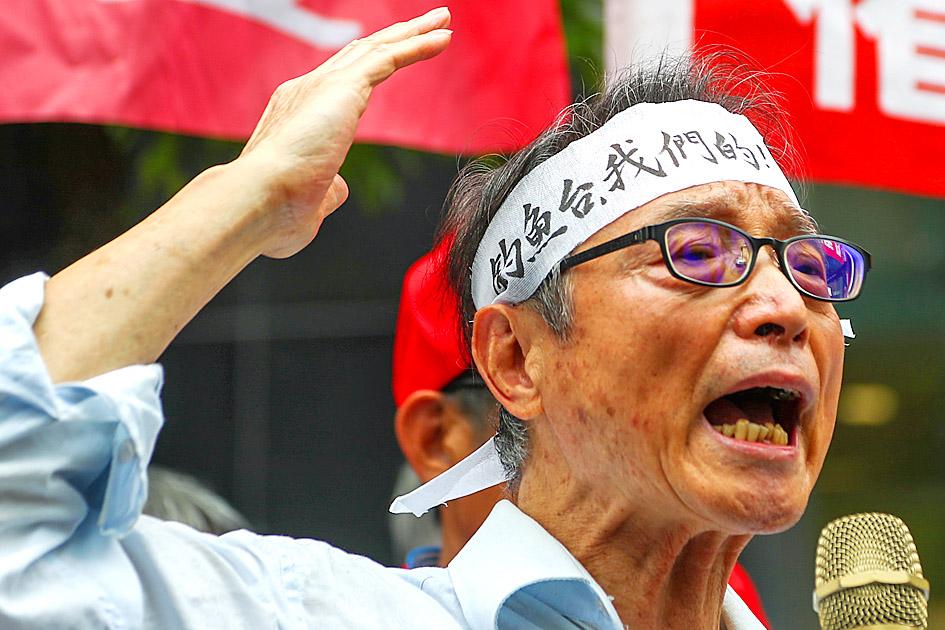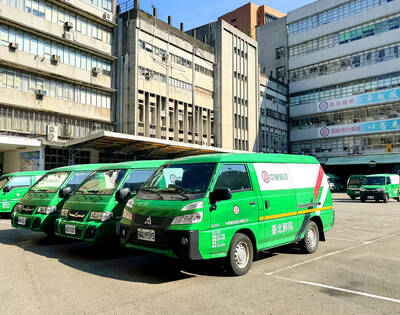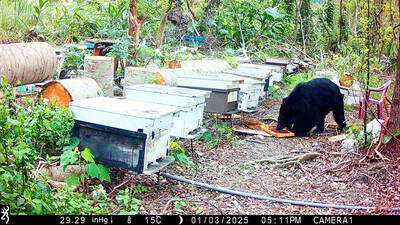Dozens of protesters yesterday gathered outside the Japan-Taiwan Exchange Association’s office in Taipei amid reports that the city of Ishigaki in Japan’s Okinawa Prefecture was planning to change the administrative designation of the Diaoyutai Islands (釣魚台).
The islands — known as the Senkaku Islands in Japan — are a group of uninhabited islands in the East China Sea claimed by Taiwan, China and Japan.
The Liberty Times (sister newspaper of the Taipei Times) yesterday cited Japanese local news reports as saying that a proposal was to be made at an Ishigaki city council meeting to change the administrative designation of the islands from Tonoshiro to “Tonoshiro Senkaku.”

Photo: CNA
According to an English-language report published on Sunday by the Asahi Shimbun, Ishigaki Mayor Yoshitaka Nakayama defended the proposal in an interview with the paper on Saturday, saying that the change aims to streamline administrative work by further dividing the Tonoshiro area.
The Japanese-language Okinawa Times on Saturday also reported on the proposed name change.
Several groups were represented at the rally in Taipei, including the organizers, the Diaoyutai Education Association, the Taiwan Association for Recovery of the Diaoyutai Islets and Zhong Hua Bao Diao Association, with protesters shouting slogans such as “Diaoyutais are ours,” and “Safeguard sovereignty, protect fishing rights.”

Photo: CNA
Organizers in a letter of protest said that Japan’s naming or renaming of the islands would be a serious encroachment on Taiwan’s territory, sovereignty and fishing rights.
For generations, the waters surrounding the islands have been a traditional fishing area of fishers based in ports in Yilan County and Keelung — especially those in the Nanfangao (南方澳) fishing harbor — the letter said.
It called on Japan to “reflect on and correct” an aggression toward and annexation of other parts of Asia it said began in the 19th century, and to “completely abolish militarist ideology,” saying that the dispute over the islands still exists because Japan has failed to do so.
The protesters had hoped to deliver the letter to an association official in person, but no one from the association immediately responded to their requests.
Asked about the issue during a news briefing in Taipei, Ministry of Foreign Affairs spokeswoman Joanne Ou (歐江安) said that according to information gathered by the ministry, the council only submitted the proposal yesterday and would vote on the issue on June 22.
The ministry has expressed its serious concern about the matter to Japan, while reiterating Taiwan’s sovereignty over the islands, Ou said.
Taiwan’s sovereignty rights over the islands would not be altered just because another country or its local government renames them, she said.
The nation’s abiding position is that any disputes should be resolved through peaceful means, and Japan and China should restrain themselves to avoid escalating tensions in the region, Ou said.
Taiwan would continue to monitor the situation on the islands and in nearby waters, and would take action to defend its sovereignty and fishers’ rights, she added.
Additional reporting by Lin Chia-nan

SHIPS, TRAINS AND AUTOMOBILES: The ministry has announced changes to varied transportation industries taking effect soon, with a number of effects for passengers Beginning next month, the post office is canceling signature upon delivery and written inquiry services for international registered small packets in accordance with the new policy of the Universal Postal Union, the Ministry of Transportation and Communications said yesterday. The new policy does not apply to packets that are to be delivered to China, the ministry said. Senders of international registered small packets would receive a NT$10 rebate on postage if the packets are sent from Jan. 1 to March 31, it added. The ministry said that three other policies are also scheduled to take effect next month. International cruise ship operators

HORROR STORIES: One victim recounted not realizing they had been stabbed and seeing people bleeding, while another recalled breaking down in tears after fleeing A man on Friday died after he tried to fight the knife-wielding suspect who went on a stabbing spree near two of Taipei’s busiest metro stations, Taipei Mayor Chiang Wan-an (蔣萬安) said. The 57-year-old man, identified by his family name, Yu (余), encountered the suspect at Exit M7 of Taipei Main Station and immediately tried to stop him, but was fatally wounded and later died, Chiang said, calling the incident “heartbreaking.” Yu’s family would receive at least NT$5 million (US$158,584) in compensation through the Taipei Rapid Transit Corp’s (TRTC) insurance coverage, he said after convening an emergency security response meeting yesterday morning. National

PLANNED: The suspect visited the crime scene before the killings, seeking information on how to access the roof, and had extensively researched a 2014 stabbing incident The suspect in a stabbing attack that killed three people and injured 11 in Taipei on Friday had planned the assault and set fires at other locations earlier in the day, law enforcement officials said yesterday. National Police Agency (NPA) Director-General Chang Jung-hsin (張榮興) said the suspect, a 27-year-old man named Chang Wen (張文), began the attacks at 3:40pm, first setting off smoke bombs on a road, damaging cars and motorbikes. Earlier, Chang Wen set fire to a rental room where he was staying on Gongyuan Road in Zhongzheng District (中正), Chang Jung-hsin said. The suspect later threw smoke grenades near two exits

The Forestry and Nature Conservation Agency yesterday launched a gift box to market honey “certified by a Formosan black bear” in appreciation of a beekeeper’s amicable interaction with a honey-thieving bear. Beekeeper Chih Ming-chen (池明鎮) in January inspected his bee farm in Hualien County’s Jhuosi Township (卓溪) and found that more than 20 beehives had been destroyed and many hives were eaten, with bear droppings and paw prints near the destroyed hives, the agency said. Chih returned to the farm to move the remaining beehives away that evening when he encountered a Formosan black bear only 20m away, the agency said. The bear